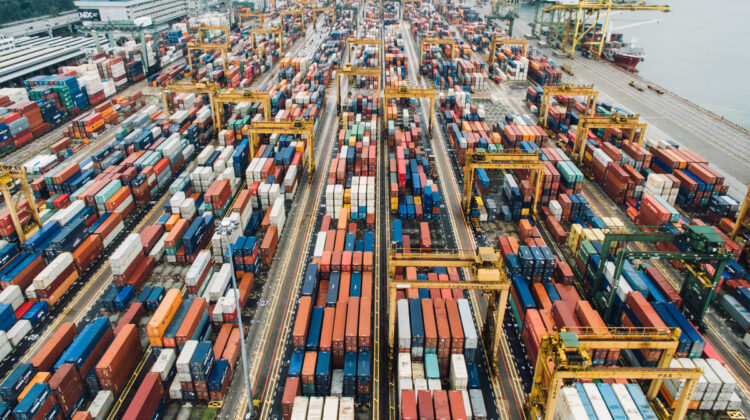
Container prices double, leasing rates triple in China
BEIJING : The average container prices in China have reached their highest in two years, at US$3,600 this week for 40 ft high cube cargo-worthy containers in China.These prices were somewhere around US$1,700 in March – April 2024. This is a 112% increase in a span of two months.
While the average container prices (for purchasing containers) are on a significantly upward trend, the average one-way pick-up charges (for leasing containers) continue to develop at a staggering rate so far in June.
The chart below illustrates the development of average pick-up charges for 40 ft-high cube cargo-worthy containers from the peak Covid-19 period until June 2024, focusing on routes from China to the US and Europe.
“While prices and rates are significantly up, trading volumes have decreased as buyers
are becoming more cautious. This trend potentially indicates a potential reversal of
prices in the near future, as the market adjusts to the current disruptions and the high
levels of volatility.” shared Christian Roeloffs, Co Founder and CEO of Container xChange.
Leasing rates on China to Europe stretch rise by 3X
The average pickup charges ex Shanghai to Rotterdam were somewhere around US$500 in November 2023 which are now 3X, somewhere around US$1,700, to Hamburg is US$2,030 and to Antwerp is US$1,888 (as on 23 June 2024).
Leasing rates double on China to US stretch in June
Overall, the pickup charges doubled since November until June Ex Shanghai to key ports in
the US. Shanghai to New York rates were around US$568 in November 2023, which are now at US$1,200 so far in June 2024. Shanghai to Oakland rates were US$370 in November 2023 which are now at US$1,663 as on 23 June 2024. Shanghai to Los Angeles rates were US$643 in November 2023, reaching US$1107 as on 23 June 2024. Shanghai to Long Beach pickup charges also spiked from US$610 to US$1,230 in the same duration.
“We witness asking rates for leasing containers reaching US$2,600 this week in China. This is crazy. These pickup charges were not more than US$300 only until October last year, and
without any significant demand surge from the consumer side, these prices are increasing
only because of the disruptions at sea and not driven by demand, which worries us
because this means it’s not sustainable, highly volatile,” shared a Container xChange
customer from China, a container supplier based in Shanghai.
“The buyers and the lessees are waiting it out, hoping that this wave will wane out. But we
do not see any immediate correction, as the market is too active, and freight demand
continues to remain strong here in China,” added the customer.
Impact of positive US retail trends on China container demand
- US Retail Inventories and Sales Growth: The Monthly Retail Trade Survey shows a
consistent rise in US retail inventories, from US$769.3 billion in January to US$793.5 billion in April 2024. Significant increases are seen in sectors like motor vehicle and parts dealers and building materials. - Continued Retail Sales Growth: In May, retail sales increased by 0.1% month over month and 2.3% year over year, with core retail sales (excluding automobile dealers,
gasoline stations, and restaurants) rising by 0.3% month over month and 2.9% year
over year. This aligns with NRF’s forecast for a 2.5% to 3.5% increase in retail sales
for 2024.
The rise in US retail inventories, particularly in sectors like motor vehicles and building
materials, indicates strong demand for container shipping services. This is expected to
increase the need for container shipments from China, a major manufacturing hub.
Encouraging growth in China’s container throughput
- China’s ports recorded a 9% YoY increase in container throughput in the first four
months of 2024, handling 104.03 million TEUs. Foreign trade cargo throughput
increased by 9.1% YoY - Total cargo throughput reached 5.55 billion tonnes; a 5.2% rise compared to the same period last year.
Sanctions and Tariffs to Impact Euro-China Trade
The European Commission has proposed tariffs of up to 38% on Chinese electric vehicles,
in addition to the existing 10% tariff, citing concerns over state subsidies. While the Container shipping sector is not directly impacted by these EV tariffs, we view this development as an early signal of potential broader trade tensions. If the proposed tariffs are implemented, the cost of exporting Chinese EVs to Europe will rise, possibly leading to a tariff war. This escalation could result in increased tariffs on a wider range of goods, impacting global supply chains. Higher tariffs and trade barriers could lead to delays and additional costs in the supply chain, causing inefficiencies in container utilization and higher operational costs for shipping companies.
Market Outlook
“Despite the current tariff dispute, the long-term outlook for China’s container market
remains cautiously optimistic. The positive trends in US retail demand and robust growth
in China’s port throughput suggest sustained demand for container shipping services. However, the resolution of the EU-China tariff dispute will be crucial in shaping the short-to-medium-term market dynamics,” commented Christian Roeloffs, Co Founder and CEO of Container xChange.
“Container shipping companies should prepare for potential shifts in trade patterns by
diversifying their routes and enhancing logistics capabilities in other growing markets, such
as Southeast Asia and South America. Investing in technology and infrastructure to improve efficiency and reduce costs will be critical in navigating the potential market volatility and maintaining competitiveness,” Roeloffs added.

